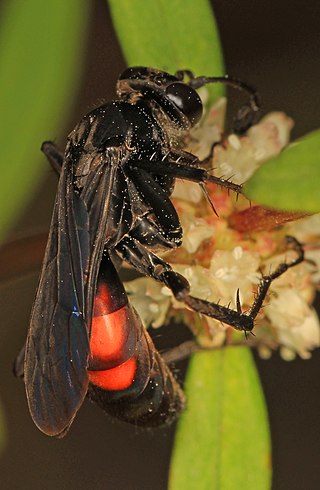
Ithaca is a city in and the county seat of Tompkins County, New York, United States. Situated on the southern shore of Cayuga Lake in the Finger Lakes region of New York, Ithaca is the largest community in the Ithaca metropolitan statistical area. It is named after the Greek island of Ithaca. As of 2020, the city's population was 32,108.

Ithaca College is a private college in Ithaca, New York. It was founded by William Egbert in 1892 as a conservatory of music. Ithaca College is known for its media-related programs and entertainment programs within the Roy H. Park School of Communications and the Ithaca College School of Music, Theatre, and Dance. The college has a liberal arts focus, and offers several pre-professional programs, along with some graduate programs.

Deke House, the Delta Kappa Epsilon or "Deke" House on the campus of Cornell University, was built in 1893 and was listed on the National Register of Historic Places in 1991. It was designed by William Henry Miller to serve as a fraternity house. Two trees which Theodore Roosevelt planted in front of the house are on the National Register of Historic Trees.

Anoplius is a genus of spider wasps in the family Pompilidae called the blue-black spider wasps. It is one of two genera within the tribe Anopliini of subfamily Pompilinae.

Anoplius viaticus, commonly known as the black-banded spider wasp, is a species of spider wasp. These wasps are known as spider wasps because the females capture spiders to provide their offspring with food. The paralysed spider is cached in a burrow, the wasp lays an egg on it, and when this hatches, the developing wasp larva consumes the spider. This species is found in sandy heathland across most of Europe.
Anoplius infuscatus is a species of spider wasp found mainly in Eurasia.

Anoplius americanus is a species of blue-black spider wasp which is widely distributed in the New World.
Anoplius virginiensis is a species of spider wasp in the family Pompilidae.
Anoplius illinoensis is a species of spider wasp in the family Pompilidae.

Anoplius subcylindricus is a species of spider wasp in the family Pompilidae.
Anoplius cleora is a species of spider wasp in the family Pompilidae.

Anoplius apiculatus is a species of spider wasp in the family Pompilidae.

Anoplius aethiops is a species of spider wasp in the family Pompilidae. It primarily lives in overgrown fields with fine-grained soil. It provisions its young with paralyzed Lycosidae spiders, especially those of the genus Hogna.

Anoplius atrox is a species of spider wasp in the family Pompilidae.
Anoplius carolinus is a species of spider wasp in the family Pompilidae.

Anoplius semirufus is a species of spider wasp in the family Pompilidae.

Maccaffertium ithaca is a species of flatheaded mayfly in the family Heptageniidae. It is found in North America.

Anoplius depressipes is a species of spider wasp in the family Pompilidae. It is a known predator of fishing spiders from the genus Dolomedes, and the wasp is highly adept at walking on the surface of water.

Ceropales bipunctata, the Two-Speckled Cuckoo Spider Wasp, is a species of diurnal, kleptoparasitic spider wasp in the family Pompilidae. It is an obligate kleptoparasite, meaning that it must rely on the captured provisions of other spider wasps and cannot capture its own. It is found on the Atlantic Coast of North America, north to New Brunswick, Canada. It feeds on nectar primarily from goldenrods, and also other common nectaring plants. It is known to lay an egg on the prey of other pompilids, including the two species Anoplius cleora and Anoplius aethiops. Eggs are laid in the book lung of the spider. These wasps also sometimes lay an egg on prey from spider-hunting wasps in the family Sphecidae.

The Cornell Ann S. Bowers College of Computing and Information Science and informally Cornell Bowers CIS, is home to three departments -- Computer Science, Information Science, and Statistics and Data Science -- at Cornell University, a private university based in Ithaca, New York.















